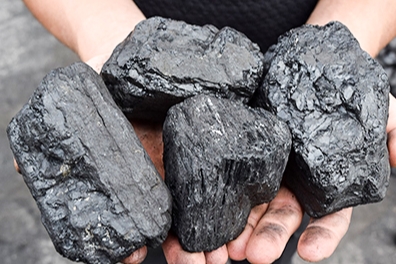
As opposed to solid carbon, which has the same basic electrochemical properties across all products manufactured by a manufacturer, every batch of carbon is different in terms of its physical, electrical, chemical and chemical characteristics. This is due to the fact that the manufacturing process of a carbon paste is complex and each preparation is unique in its raw materials, formulation and molding. The manufacture of a carbon-based paste is a complex multi-step process. It involves screening Calcined Petroleum Coke(CPC) or Electrically Calcined Anthracite Coal(ECA) into fractions before pulverizing, and then storing each fraction. Pre-determined quantities are then weighed into a Sigma Mixer.
The resultant mixture is mixed for an amount of time called the mixing cycle. After the mixing cycle is complete, the mixture will be poured into a mold box to form blocks.

Soderberg's electrode paste undergoes dramatic changes in composition and physical properties during the baking process. The thermal conductivity of the paste changes dramatically during baking. It is well known that the Soderberg paste's baking temperature lies between 673K to 773K (400degC to500degC).
The formation graphite crystallites has a large impact on the thermal conduction of an electrolyte paste during baking. These crystallites, arranged in honeycomb structures with a very high degree of order, lead to a significant increase in thermal conduction of the baked electro.
The time spent kneading the paste can also have a significant impact on its thermal conductivity. A longer kneading time results in more uniform particle distribution, which increases the thermal conductivity. However, excessive kneading can cause the thermal degradation of some components, negatively impacting the performance of the electrode.
It is therefore critical to find a balance between the improvement of an electrode's properties and avoiding conditions that could degrade their quality during the production process. Controlled experiments are used to identify the optimal kneading temperature and time for each product. Finding the ideal kneading temperature and time allows for a precise control of the baking process, ensuring that the desired electrode properties are obtained. The kneading temperatures and times can be calculated to predict the final performance. This information can be used to determine the best baking schedules for electrodes to maximize performance. In the end, this is crucial to achieve an electrode with maximum performance and reliability. This is particularly important for high-performance applications, such as those in submerged arc furnaces.

Write a Message